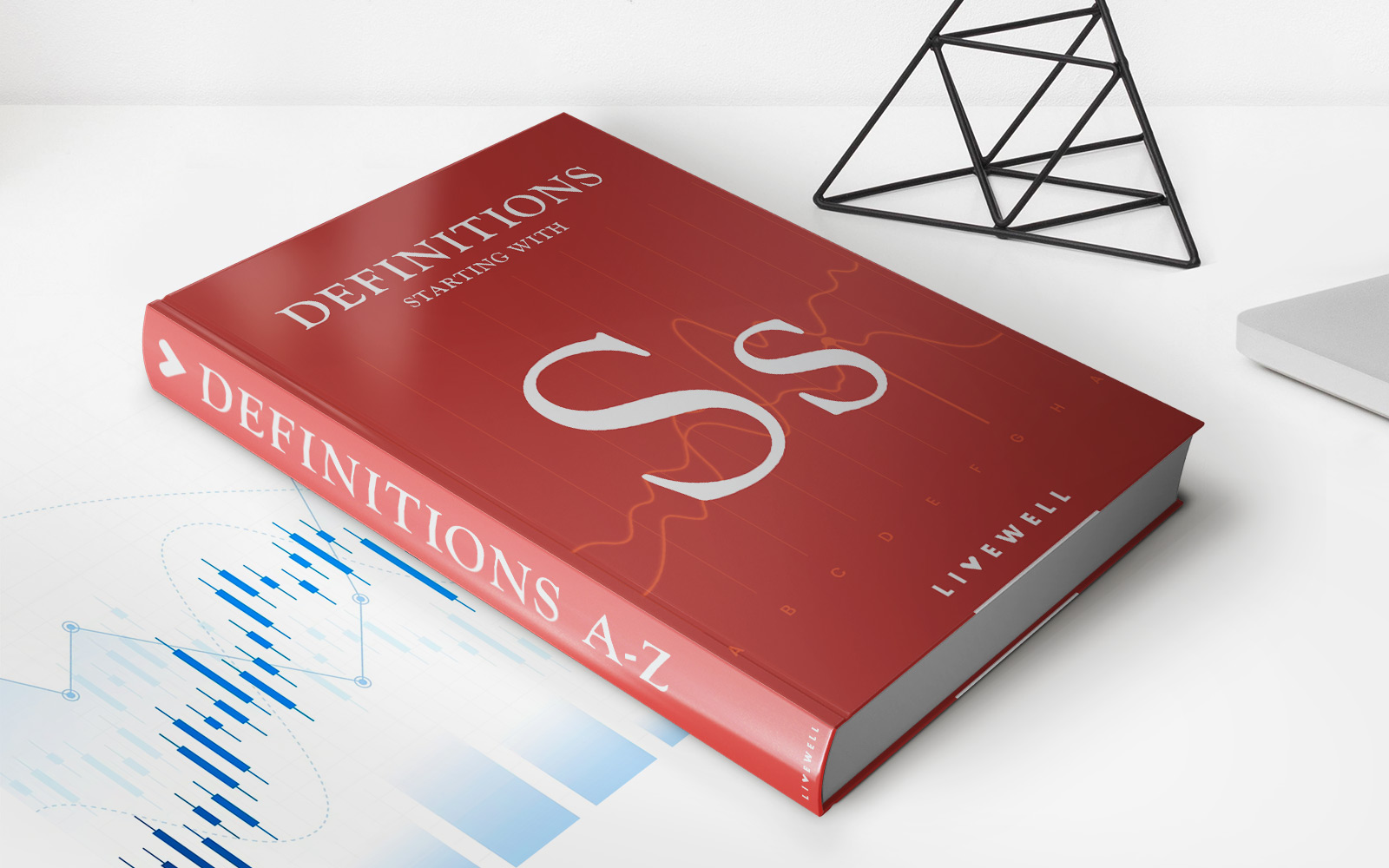Home>Finance>What Should I Roll My Pension Funds Into To Keep It From Taxes?


Finance
What Should I Roll My Pension Funds Into To Keep It From Taxes?
Published: January 23, 2024
Looking to roll your pension funds into a tax-efficient investment? Explore smart finance options to minimize tax implications and maximize your retirement savings.
(Many of the links in this article redirect to a specific reviewed product. Your purchase of these products through affiliate links helps to generate commission for LiveWell, at no extra cost. Learn more)
Table of Contents
Introduction
Understanding the Importance of Pension Fund Rollovers
Pension funds are a crucial component of retirement planning, providing individuals with financial security during their post-employment years. However, when it comes to managing these funds, the issue of taxation often looms large. Many individuals are unaware of the tax implications associated with pension funds and the options available to mitigate tax burdens. This article aims to shed light on the concept of pension fund rollovers and explore the various investment avenues that can help individuals safeguard their retirement savings from excessive taxation.
As individuals approach retirement age, they are often faced with the decision of what to do with their pension funds. One common approach is to roll over the funds into tax-advantaged investment vehicles to minimize tax liabilities and maximize the growth potential of their savings. Understanding the intricacies of pension fund rollovers and the available tax-deferred, tax-advantaged, and tax-exempt investment options is crucial for making informed decisions that align with long-term financial goals.
By delving into the world of pension fund rollovers and tax-efficient investment strategies, individuals can gain a deeper understanding of how to preserve and grow their retirement savings while minimizing the impact of taxes. This article aims to provide comprehensive insights into the various avenues for rolling over pension funds to mitigate tax implications, empowering readers to make well-informed decisions that support their financial well-being in retirement.
Understanding Pension Fund Rollovers
Exploring the Process and Benefits
When individuals retire or change jobs, they are often faced with the decision of what to do with their pension funds. One option that can help manage tax implications and provide greater control over retirement savings is a pension fund rollover. A rollover involves transferring funds from a pension plan into another qualified retirement account, thereby preserving the tax-deferred status of the funds and potentially offering a wider range of investment options.
By engaging in a pension fund rollover, individuals can avoid immediate tax consequences and continue to benefit from the compounding growth of their retirement savings. This process allows for a seamless transition of funds from one retirement account to another, such as an Individual Retirement Account (IRA) or an employer-sponsored 401(k) plan. It is important to note that rollovers must be executed in a timely manner to adhere to IRS regulations and avoid potential tax penalties.
One of the key benefits of a pension fund rollover is the ability to consolidate retirement assets, simplifying the management of multiple accounts and potentially reducing administrative fees. Additionally, individuals may gain access to a broader selection of investment options, including stocks, bonds, mutual funds, and exchange-traded funds (ETFs), depending on the new retirement account chosen for the rollover.
Furthermore, a rollover can provide greater flexibility in managing retirement assets, offering the opportunity to customize investment strategies based on individual risk tolerance, financial goals, and time horizon. This flexibility empowers retirees to take a proactive approach to wealth management and adapt their investment portfolios to changing market conditions and personal circumstances.
Overall, understanding the process and benefits of pension fund rollovers is essential for individuals navigating the complexities of retirement planning. By leveraging rollover opportunities, retirees can optimize the tax treatment of their pension funds and strategically position themselves for long-term financial security.
Tax-Deferred Investment Options
Maximizing Growth Potential While Deferring Taxes
When considering the rollover of pension funds, individuals can explore various tax-deferred investment options that offer the potential for sustained growth while postponing tax obligations. These investment vehicles are designed to provide a tax-advantaged environment for retirement savings, allowing individuals to defer taxes on investment earnings until withdrawals are made during retirement.
One prominent tax-deferred investment option is the Traditional Individual Retirement Account (IRA), which enables individuals to contribute pre-tax income, allowing their investments to grow tax-deferred until distributions are taken in retirement. Contributions to a Traditional IRA may also be tax-deductible, providing immediate tax benefits while positioning the funds for long-term growth potential.
Another tax-advantaged investment avenue is the employer-sponsored 401(k) plan, which allows for tax-deferred contributions and potential employer matching contributions, further enhancing the growth potential of retirement savings. By rolling over pension funds into a 401(k) plan or consolidating existing 401(k) accounts, individuals can benefit from a tax-efficient structure that aligns with their retirement objectives.
Furthermore, annuities, such as deferred variable or fixed annuities, offer tax-deferred growth potential, making them attractive options for individuals seeking to secure a steady stream of income during retirement. Annuities provide a structured approach to retirement income planning, allowing for tax-deferred asset accumulation and the possibility of lifetime income payments.
By leveraging tax-deferred investment options through pension fund rollovers, individuals can optimize the growth potential of their retirement savings while minimizing current tax liabilities. This strategic approach to retirement planning enables individuals to harness the power of compounding returns within a tax-advantaged framework, ultimately enhancing their financial security in retirement.
Tax-Advantaged Retirement Accounts
Utilizing Specialized Accounts for Tax Efficiency
As individuals navigate the landscape of pension fund rollovers, exploring tax-advantaged retirement accounts can offer valuable opportunities to optimize the tax treatment of retirement savings. These specialized accounts are designed to provide favorable tax benefits, allowing individuals to strategically allocate their pension funds in ways that align with their long-term financial objectives while minimizing tax implications.
One prominent tax-advantaged retirement account is the Roth Individual Retirement Account (IRA), which differs from the Traditional IRA by offering tax-free withdrawals in retirement. By rolling over pension funds into a Roth IRA, individuals can position their retirement savings for tax-free growth, providing a valuable source of tax-free income during retirement years.
Additionally, Health Savings Accounts (HSAs) present a unique tax-advantaged opportunity for individuals with high-deductible health plans. HSAs allow for tax-deductible contributions, tax-deferred growth of funds, and tax-free withdrawals for qualified medical expenses, making them a versatile tool for retirement planning and healthcare cost management.
Furthermore, individuals may consider utilizing a Spousal IRA, which enables non-working spouses to make contributions to an IRA based on the working spouse’s income. This strategy can enhance retirement savings and provide tax advantages for couples seeking to bolster their financial preparedness for retirement.
By strategically leveraging tax-advantaged retirement accounts through pension fund rollovers, individuals can tailor their retirement savings to align with their unique financial circumstances and tax objectives. These specialized accounts offer a pathway to optimize tax efficiency and create a solid foundation for long-term financial security in retirement.
Tax-Exempt Investments
Exploring Opportunities for Tax-Free Growth
While tax-deferred and tax-advantaged retirement accounts offer valuable benefits, individuals exploring pension fund rollovers may also consider tax-exempt investments as part of a diversified retirement strategy. Tax-exempt investments provide opportunities for growth and income without incurring federal or state income taxes, offering a compelling avenue for preserving and maximizing retirement savings.
Municipal bonds, issued by state and local governments, are a prominent example of tax-exempt investments. The interest income generated from municipal bonds is typically exempt from federal income tax and may also be exempt from state and local taxes if the investor resides in the issuing state. By incorporating municipal bonds into their investment portfolios through pension fund rollovers, individuals can potentially enhance after-tax returns and secure a source of tax-free income.
Another tax-exempt investment option is the Series I Savings Bond, which offers protection against inflation and the potential for tax-deferred growth. Interest earned on Series I Savings Bonds is exempt from state and local income taxes, and if the funds are used for qualified educational expenses, the interest may also be exempt from federal income tax.
Furthermore, certain health-related investments, such as Health Savings Accounts (HSAs) and Medical Savings Accounts (MSAs), provide opportunities for tax-exempt growth and withdrawals when used for qualified medical expenses. These accounts offer a tax-advantaged approach to managing healthcare costs while potentially generating tax-free returns on invested funds.
By incorporating tax-exempt investments into their retirement portfolios through pension fund rollovers, individuals can diversify their assets and create a tax-efficient foundation for long-term financial stability. These investments offer the potential to generate tax-free income and growth, contributing to a well-rounded retirement strategy that aligns with individual tax objectives and financial goals.
Conclusion
Navigating Tax-Efficient Paths for Retirement Savings
As individuals approach retirement and consider the management of their pension funds, the importance of understanding tax-efficient strategies cannot be overstated. Pension fund rollovers present valuable opportunities to mitigate tax implications and optimize the growth and preservation of retirement savings. By exploring tax-deferred, tax-advantaged, and tax-exempt investment options, individuals can strategically position themselves for a financially secure retirement while minimizing the impact of taxes.
The process of pension fund rollovers empowers individuals to consolidate retirement assets, gain access to a broader range of investment opportunities, and customize their wealth management strategies based on their unique financial circumstances and long-term objectives. Whether through Traditional or Roth IRAs, employer-sponsored 401(k) plans, or specialized accounts such as Health Savings Accounts, individuals have the flexibility to tailor their retirement portfolios to align with their tax preferences and retirement income needs.
Furthermore, the inclusion of tax-exempt investments, such as municipal bonds and Series I Savings Bonds, offers a compelling avenue for generating tax-free income and growth, enhancing the overall tax efficiency of retirement portfolios. By diversifying into tax-exempt assets, individuals can bolster their retirement savings with investments that provide favorable tax treatment, contributing to a well-rounded and resilient financial strategy.
Ultimately, the journey toward maximizing tax efficiency in retirement savings requires careful consideration, informed decision-making, and a proactive approach to wealth management. By leveraging the insights and options presented in this article, individuals can navigate the complexities of pension fund rollovers with confidence, positioning themselves for a retirement characterized by financial stability, tax efficiency, and the pursuit of long-held aspirations.
Embracing tax-efficient paths for retirement savings through pension fund rollovers is a proactive step toward building a robust financial foundation that supports the fulfillment of retirement dreams and aspirations. With a strategic and well-informed approach to managing pension funds, individuals can embark on their retirement journey with confidence, knowing that their savings are positioned to thrive in a tax-efficient environment.














